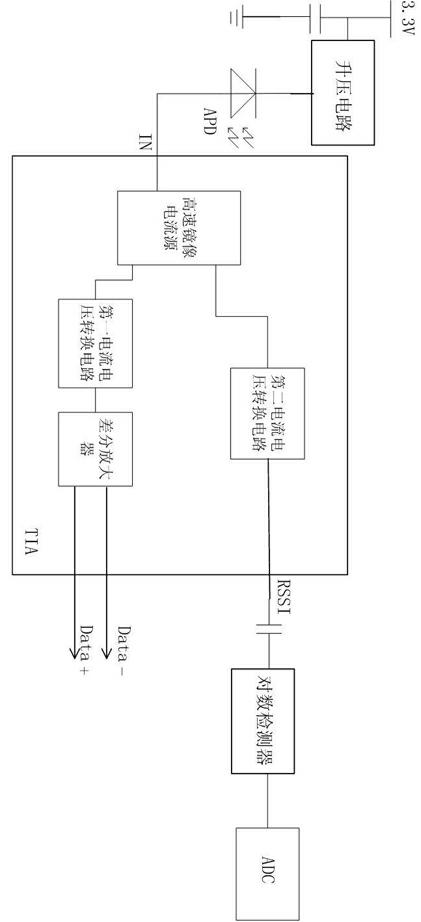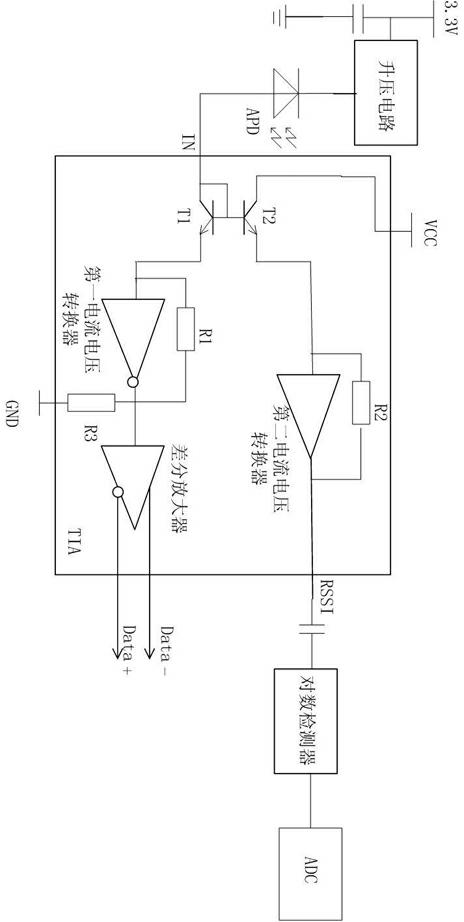Transresistance amplifier with received signal strength indication (RSSI) function
A technology of received signal strength and transimpedance amplifier, applied in the field of optical communication, can solve the problems of loss, detection of unfavorable optical power, inability to distinguish the size of strong optical power, etc., to achieve high signal-to-noise ratio, elimination of power loss, and clear signal Effect
- Summary
- Abstract
- Description
- Claims
- Application Information
AI Technical Summary
Problems solved by technology
Method used
Image
Examples
Embodiment Construction
[0019] All features disclosed in this specification, or steps in all methods or processes disclosed, may be combined in any manner, except for mutually exclusive features and / or steps.
[0020] Any feature disclosed in this specification (including any claims, abstract and drawings), unless specifically stated otherwise, may be replaced by alternative features which are equivalent or serve a similar purpose. That is, unless expressly stated otherwise, each feature is one example only of a series of equivalent or similar features. At the same time, the description of replacement features in this manual is a description of equivalent technical features, and shall not be regarded as a donation to the public.
[0021] If the terms in this specification (including any claims, abstracts and drawings) have both the general meaning and the specific meaning in this field, unless otherwise specified, they are all defined as the specific meaning in this field.
[0022] like figure 1 Sh...
PUM
 Login to View More
Login to View More Abstract
Description
Claims
Application Information
 Login to View More
Login to View More - R&D
- Intellectual Property
- Life Sciences
- Materials
- Tech Scout
- Unparalleled Data Quality
- Higher Quality Content
- 60% Fewer Hallucinations
Browse by: Latest US Patents, China's latest patents, Technical Efficacy Thesaurus, Application Domain, Technology Topic, Popular Technical Reports.
© 2025 PatSnap. All rights reserved.Legal|Privacy policy|Modern Slavery Act Transparency Statement|Sitemap|About US| Contact US: help@patsnap.com



